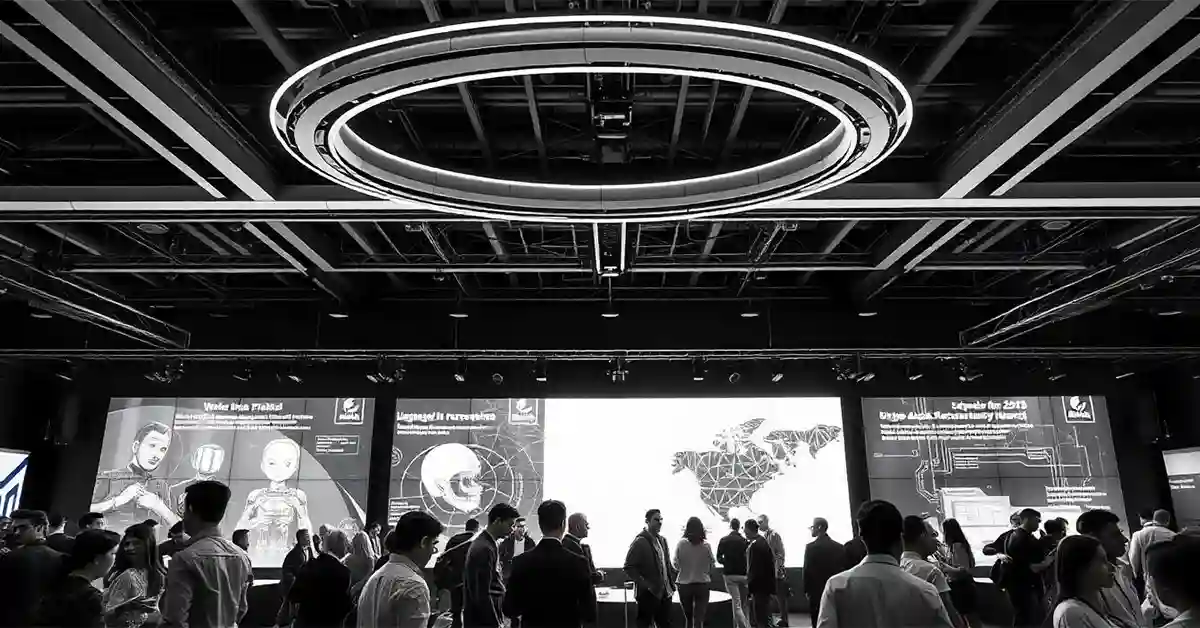In today’s rapidly changing media environment, the ideological split at the New York Times (NYT) has sparked intense debate and analysis. With its roots in the early 20th century, the NYT has long been considered a bastion of journalistic integrity. However, as political polarization increases, so too does scrutiny of the Times’ perceived biases. How did the ideological split at the NYT come to define its coverage, and what does this mean for the future of journalism? These questions are critical for understanding the dynamics of how media shapes public opinion and vice versa.
The ideological split at the NYT is often seen through the lens of its editorial decisions, op-ed contributions, and the internal culture that influences the newsroom. Critics argue that the paper leans more liberal in its coverage, while supporters assert that it maintains a commitment to balanced journalism. Is the ideological split a reflection of broader societal divisions, or is it a natural evolution of the media landscape? The implications of this divide stretch beyond the NYT, affecting trust in media institutions as a whole.
The growing divide underscores the importance of transparency and accountability in news reporting. For political analysts, news enthusiasts, and educated readers, understanding this split can provide valuable insights into the forces shaping modern journalism. By delving into its origins, examining its manifestations, and exploring its consequences, this blog aims to offer a comprehensive view of the ideological split at the NYT. Read on to discover how this split affects not just a single publication, but the entire media landscape.
The Historical Context of NYT’s Ideological Stance
The New York Times, founded in 1851, has a rich history of journalistic excellence. Throughout its history, the paper has navigated various political climates and social changes. In its early years, the NYT was known for its centrist views, appealing to a broad audience. However, as the political landscape evolved, so too did the paper’s editorial stance.
By the mid-20th century, the NYT began taking more progressive positions on issues like civil rights and social justice. This shift was partly influenced by broader societal changes and the rise of new political movements. The paper’s reputation for in-depth reporting and unwavering commitment to facts solidified its place as a trusted news source.
In recent decades, however, the NYT has faced criticism for its perceived liberal bias. The rise of digital media and increased political polarization have put the paper under scrutiny. Critics argue that its coverage has become more opinion-driven, reflecting a shift away from traditional journalistic objectivity.
Editorial Decisions and Their Impact
Editorial decisions at the NYT play a crucial role in shaping its ideological stance. These decisions determine which stories are covered, how they are framed, and which voices are amplified. The editorial board, consisting of experienced journalists and editors, guides the paper’s direction.
One area where the ideological split becomes evident is the op-ed section. Here, the NYT provides a platform for diverse perspectives, though it often faces criticism for perceived imbalances. Some argue that the paper gives more space to liberal viewpoints, while others highlight its efforts to include conservative voices.
Editorial decisions also extend to headline writing and story placement. The language used and the prominence given to certain stories can influence readers’ perceptions. Critics point to examples where headlines appear to favor certain ideological narratives, sparking debates about journalistic integrity.
Op-Ed Contributions and the Ideological Spectrum
The op-ed section of the NYT serves as a platform for diverse voices and opinions. It is within this space that the ideological split often becomes most pronounced. Contributors range from well-known journalists to academics and public figures, each bringing unique perspectives.
Opinions published in the op-ed section can reflect the broader ideological divide within the paper. Some pieces advance progressive viewpoints, advocating for social change and equality. Others present conservative arguments, emphasizing individual liberty and limited government.
The NYT strives to strike a balance between these perspectives, but challenges arise in achieving true diversity of thought. Critics argue that the selection process can inadvertently skew towards certain ideologies, reinforcing existing divides. Nonetheless, the op-ed section remains an important forum for public discourse.
Internal Culture and Its Influence
The NYT’s internal culture plays a significant role in shaping its coverage and ideological stance. The newsroom is composed of journalists with diverse backgrounds and experiences, each contributing to the paper’s overall tone. The interplay of these voices influences the narratives presented to readers.
Editorial meetings and discussions are critical in shaping the direction of the paper. Journalists and editors debate story ideas, angles, and priorities. The decisions made during these meetings reflect the values and priorities of the newsroom, impacting the ideological leanings of the paper.
Critics argue that the NYT’s internal culture leans more progressive, influencing its coverage of certain issues. Supporters contend that the paper’s commitment to journalistic integrity ensures diverse perspectives are considered. The challenge lies in maintaining a balance that reflects the complexity of the issues at hand.
Perceived Liberal Bias and Public Perception
The perception of a liberal bias at the NYT is a topic of ongoing debate. Critics argue that the paper’s coverage tends to favor progressive perspectives, leading to skewed reporting. They point to examples where language and framing appear to align with liberal narratives.
Supporters, however, emphasize the NYT’s commitment to factual reporting and accountability. They contend that accusations of bias often stem from disagreements with specific viewpoints. The paper’s rigorous fact-checking and editorial standards aim to ensure accuracy and fairness.
Public perception of bias can impact trust in the media, influencing how readers engage with news. It is crucial for the NYT to address these concerns transparently and uphold its reputation as a reliable source of information.
Balancing Objectivity and Advocacy
The challenge for the NYT lies in balancing objectivity with the advocacy of important social issues. Journalism plays a vital role in holding power accountable and driving positive change. However, the line between unbiased reporting and advocacy can sometimes blur.
The NYT has a long history of advocacy journalism, championing causes like civil rights and environmental protection. These efforts reflect the paper’s commitment to social progress and justice. However, critics argue that this advocacy can sometimes compromise journalistic objectivity.
To maintain credibility, the NYT must continue upholding rigorous editorial standards. Separating opinion from fact and providing context for complex issues is essential. By doing so, the paper can effectively balance its role as both a watchdog and an advocate for change.
The Role of Social Media in Amplifying Divisions
Social media platforms have transformed the way news is consumed and shared. They provide a space for diverse voices and perspectives but also contribute to echo chambers and polarization. The NYT’s presence on social media plays a significant role in shaping its public image.
Social media allows the NYT to engage with readers directly and promote its content. However, it also exposes the paper to criticism and scrutiny from all sides. Readers can quickly voice their opinions and challenge the narratives presented.
The challenge for the NYT lies in navigating the complexities of social media while maintaining journalistic integrity. It must strike a balance between engaging with its audience and preserving its editorial independence.
The Impact of Political Climate on Coverage
The political climate in the United States has become increasingly polarized in recent years. This polarization influences how news is reported and consumed. The NYT, as a prominent news outlet, plays a crucial role in shaping public discourse.
The paper’s coverage of political events and issues reflects the broader ideological divide. Critics argue that its reporting sometimes aligns with partisan narratives, reinforcing existing biases. However, supporters highlight the importance of providing context and analysis in a complex political landscape.
Political analysts and news enthusiasts closely observe the NYT’s coverage to gain insights into the evolving dynamics of American politics. Understanding these influences is essential for comprehending the broader media landscape.
The Challenges of Covering Complex Issues
The NYT covers a wide range of complex issues, from climate change to healthcare policy. These topics require careful analysis and nuanced reporting. However, the ideological split at the paper can sometimes impact how these issues are framed and presented.
Critics argue that certain topics receive more attention and emphasis, aligning with specific ideological agendas. This can influence public perception and shape policy debates. Maintaining a balanced approach is crucial to providing comprehensive coverage.
The NYT’s commitment to investigative journalism and in-depth reporting remains a vital asset. By exploring complex issues from multiple angles, the paper can contribute to informed public discourse.
The Role of Journalistic Integrity
Journalistic integrity is the foundation of the NYT’s reputation. Upholding ethical standards and ensuring accuracy is paramount in maintaining reader trust. The paper’s commitment to transparency and accountability is essential in navigating the challenges of the ideological split.
The NYT’s code of ethics guides its journalists in their work. Fact-checking, source verification, and editorial oversight are integral to its reporting process. These practices help ensure that the information presented is reliable and trustworthy.
While the ideological split presents challenges, the NYT’s dedication to journalistic integrity remains steadfast. By adhering to these principles, the paper can continue to serve as a reliable source of news and analysis.
The Future of Journalism in a Polarized World
The ideological split at the NYT reflects broader trends in the media industry. As political polarization continues to shape public discourse, journalism faces new challenges and opportunities. Navigating these complexities requires adaptability and innovation.
The NYT, as a leading news organization, has the potential to influence the future of journalism. By fostering diverse perspectives and engaging with its audience, the paper can contribute to bridging ideological divides.
The role of journalism in a polarized world is more critical than ever. By upholding its commitment to truth and accountability, the NYT can lead the way in fostering informed dialogue and understanding.
Conclusion
In exploring the ideological split at the New York Times, we gain valuable insights into the dynamics of modern journalism. This divide reflects broader societal divisions and presents challenges for media institutions worldwide. For political analysts, news enthusiasts, and educated readers, understanding this split is crucial in navigating the complexities of today’s media landscape.
The NYT’s commitment to journalistic integrity and balanced reporting remains essential. By addressing concerns about bias and fostering diverse perspectives, the paper can continue to serve as a trusted source of information. Navigating the ideological split requires adaptability and transparency, ensuring that journalism fulfills its vital role in society.
FAQs With Answers
What is the ideological split at the New York Times?
The ideological split at the New York Times refers to perceived differences in how the paper covers and presents news, often seen as leaning more progressive in its editorial decisions and op-ed contributions.
How does the ideological split affect the NYT’s coverage?
The ideological split can influence which stories are prioritized, how they are framed, and which voices are amplified. This can impact public perception and trust in the paper’s reporting.
What role does the op-ed section play in the ideological split?
The op-ed section provides a platform for diverse opinions, reflecting the broader ideological spectrum. While it offers a range of perspectives, it can also reinforce perceived biases.
How does social media impact the NYT’s ideological stance?
Social media allows the NYT to engage with readers directly but also exposes it to criticism and scrutiny. It plays a role in shaping public perception and amplifying ideological divisions.
What is the future of journalism amidst political polarization?
The future of journalism in a polarized world requires adaptability and innovation. By fostering diverse perspectives and upholding journalistic integrity, news organizations like the NYT can contribute to informed public discourse.






